Genetic analysis has uncovered new details about the history, adaptation and survival of the world’s fastest land animal, the cheetah. The cheetah is descended from a relative of the American puma, and 100,000 years ago could be found across the Americas before moving into Asia and Europe. The results of the genomic analysis have pinpointed […]
Tag: evolution
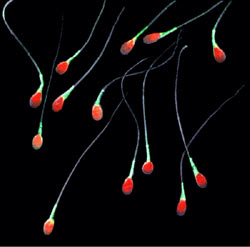
Human sperm are surface swimmers
Human sperm are able to swim faster and straighter when they are close to a surface by adopting a unique ‘slither’ according to new research. The research team believes this slither may have adapted to the confined space in the reproductive system. Researchers filmed human sperm swimming within a micron of a glass surface and […]
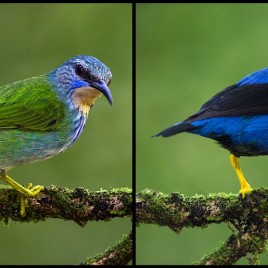
Male songbirds aren’t colourful, females are just drab
The colour differences seen in the plumage of male and female songbirds is mostly from to the effects of sexual selection upon the female, not the male, according to a new analysis. This challenges the long-held view that males developed more colourful plumage because of sexual selection. Researchers quantified the colouration of nearly 6,000 species […]
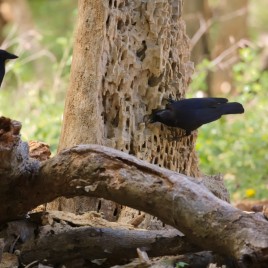
Branching out of the family
Crows spend most of their social time with family members, but when they need a little extra help to get some food – they’re not averse to enlisting others, according to researchers. New Caledonian crows are a clever group – a species known to use tools to get hard to reach food. Analyzing the activity […]
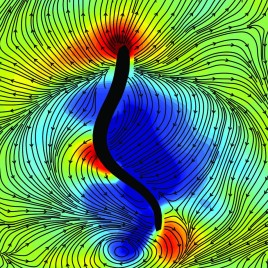
What we can learn from jellyfish
Jellyfish and lamprey eels have some of the lowest energy costs for swimming of any animal, and now scientists have figured out how they do it. Fish, humans, and boats move forward by propelling water backwards thereby generating thrust. Jellyfish and eels however are able to generate low pressure regions that help pull them through the […]
Unlocking the secrets of electric eels
Videos of the electric eels in the experiment are available here, and here. (Video credit: Kenneth Catania) Electric eels use their high-voltage discharge not only to stun their prey, but to also to track it before attacking, according to new research. The eels are able to track prey in this manner without the use of […]
Transmitting resistance to malaria
Drug-resistant malaria parasites, which have so far emerged only in Southeast Asia, can infect species of mosquitoes found in Africa, according to a new study. If the drug-resistant parasites spread to the African mosquito species it could potentially damage global efforts to eradicate malaria, according to the authors. However further research is required to determine […]
How the Emperor stays warm: Secrets of the emperor penguin
Researchers have discovered how the emperor penguin withstands the cold temperatures of Antarctica. The secret is in their down, and a specific type of feather called the plumule. The plumule, one of four types of feathers on a penguin, has previously been overlooked as an important part of the insulation. Studying three emperor penguins, researchers […]

Beauty really is in the eye of the beholder
Beauty really is in the eye of the beholder, or at least partly, according to new findings. While there are indeed some universal aspects of attractiveness, such as symmetry, they believe that the uniqueness of an individual’s facial preferences is determined by experiences with friends and peers, past partners, as well as social and popular […]
You catch more flies with a frog’s tongue
Frogs capture their prey with the flick of a sticky tongue, and now new research is showing just how the tongue can be as sticky as adhesive tape. Now, by filming frog tongues at high-speed, researchers have captured, for the first time, how the tongue manages to immediately adhere to different surfaces. The video showed […]
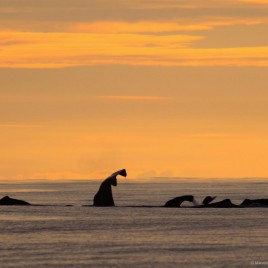
How Sperm whales speak
Sperm whales learn different ‘dialects’ of their ‘click’ sounds through cultural learning, a method of learning found in both Orcas and humans, say researchers. This reinforces the idea that the same processes responsible for the formation of human cultures can operate in animal societies. Sperm whales live in clans – groups of families that can […]
Common molecular toolkit shared across the Tree of Life
The assembly instructions for nearly 1,000 protein complexes shared by most kinds of animals have been revealed, offering a new tool for studying the causes of diseases like Alzheimer’s and different cancers. Proteins come together to form complexes, or molecular machines, which are responsible for certain functions in cells. The new research indicates that most […]
A new understanding of pig domestication
Domesticating the pig turns out to be more complicated than we thought. We used to think they were domesticated by isolating small populations and selectively breeding for certain traits, however this does not appear to be the case for pigs. By analyzing the genomes of over 600 domestic pigs and wild boars from Europe and […]
Tracing the family history of HIV
Lentiviruses, a group of retroviruses including HIV and SIV, the simian version of HIV, have been infecting primates as far back as 16 million years ago according to DNA sequencing. Researchers studied an antiviral gene called TRIM5 in 22 species of African primates. They found that a cluster of changes unique to the TRIM5 proteins […]
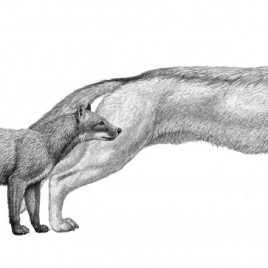
Dogs evolved with climate change
The evolution of North American dogs shows that evolution can be a direct consequence of climate change, and is not always associated with an “arms race” between ancient dogs and their prey. Researchers studied fossil elbows and teeth of 32 species of dogs from 40 million years to two million years ago, the same period when climate […]
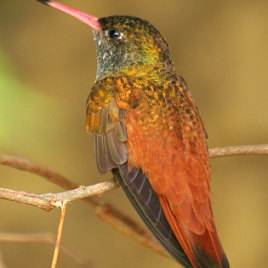
How hummingbirds drink: rethinking 50 years of research
High-speed videos have shown how hummingbirds feed on nectar, and it’s not what was previously thought. It’s not in the same way fluid rises in a capillary tube. Hummingbirds actually extract nectar by creating a tiny pump using the tongue. The new findings mean that fifty years of research studying how hummingbirds and floral nectar […]
